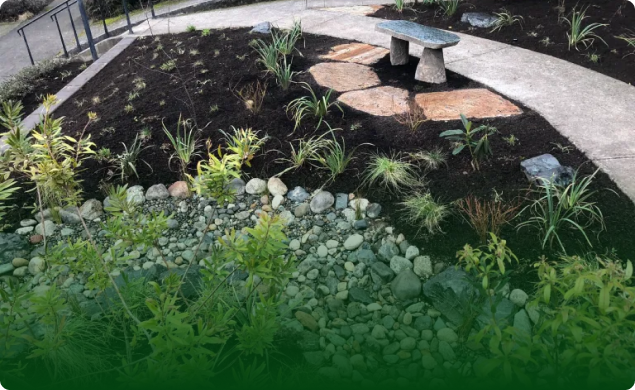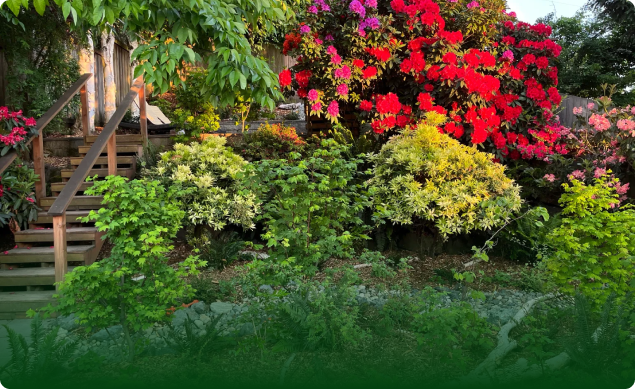By Teddy Rutberg, Rutheo Designs LLC
In Seattle—a city cradled by sea, forest, and sky—something magical happens when we let nature take the lead. Ecological landscaping isn’t just a trend; it’s a quiet rebellion. A way to soften the hard edges of urban life and weave the wild back into our sidewalks, yards, and parks. And in doing so, we welcome the bees, the birds, and a whole world of wonder.
Pollinators, Songbirds, and Secret Sanctuaries
When we trade turfgrass for native plants like red-flowering currant, yarrow, or sword fern, we’re not just choosing foliage—we’re writing invitations to hummingbirds, butterflies, and mason bees. These plants evolved here, just like the creatures who rely on them. They provide nectar, seeds, and shelter, stitching together a patchwork of habitat across the urban fabric.
Birds, especially fledglings, rely on the plump caterpillars that only native plants support in abundance. So that humble patch of kinnickinnick or salal? It might just be a nursery for the next generation of chickadees. Embracing insects on plants as members of the local ecosystem, rather than a pest to be dealt with, opens a door for more peace in the garden and better birdsong in spring.
Beauty in the Wild and Whimsy
Ecological gardens celebrate imperfection—curving paths, tangled vines, and mossy corners. There’s less mowing, less blowing, and far more glowing: a kaleidoscope of blooms and textures that change with the seasons. Seattle’s rain becomes a resource, caught by rain gardens and used by deep-rooted natives that don’t fuss over drought or fertilizer.
The result? Less maintenance, more magic. A living landscape that offers surprises year-round, from delicate trilliums in spring to fiery vine maples in fall.
Decolonizing Urban Landscapes
Perhaps the most powerful transformation, though, is how ecological landscaping invites us to rethink our relationship with the land. Before Seattle was a city, it was home to the Coast Salish peoples—including the Duwamish and Mukilteo tribes—whose stewardship honored the rhythms of nature. Their practices, rooted in reciprocity and respect, remind us that landscaping isn’t just about aesthetics; it’s about belonging.
Restoring native plants is one small way to decolonize our green spaces. Giving up control over the land we live on and becoming open to a collaboration with nature allows a richer relationship to form. It’s a gesture of remembrance and reconnection—acknowledging that these lands were not blank slates, but vibrant ecosystems shaped by Indigenous knowledge.
Growing Toward a Wilder Future
In embracing ecological landscaping, Seattle isn’t just getting greener—it’s getting wiser, wilder, and more just. With every lupine planted and every lawn replaced, we inch closer to a city where humans, birds, bees, and ancestral memory can all take root and flourish.
Let the garden grow a little unruly. Let it hum and flutter. Let it tell a story older than sidewalks, yet new with every bloom.
Images:
Author headshot:







